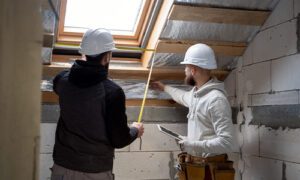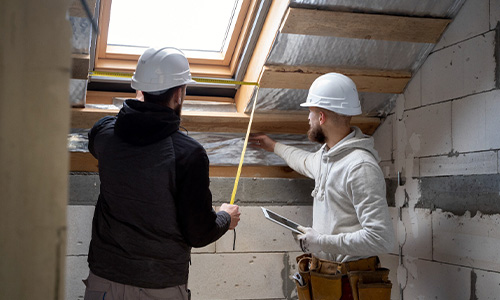
Houses, commercial properties, and all types of buildings are significant investments generally made for the long term. If we are to maintain effectiveness, beauty, and safety, we will need to think about long-term care for our buildings, and buildings can have decades-long lifespans. Over time, environmental factors, wear and tear, and neglect can lead to deterioration, costly repairs, or even structural failure. Maintenance engineering services is how we manage all of these factors in a timely and cost-effective manner. By implementing preventive strategies, optimizing repair schedules, and using expert techniques, you can significantly extend the life of your building, saving both time and money in the long run.
Here is a blog detailing maintenance engineer’s proven, successful maintenance engineering practice, and cost-saving tips, including reliable strategies to ensure your building will last for decades.
Table of Contents
- What is Maintenance Engineering?
- Why Maintenance is Key to Building Longevity?
- Types of Building Maintenance
- Key Strategies in Proper Maintenance Engineering:
- Cost-Saving Tips for Long-Term Building Care
- Common Mistakes to Avoid
- Conclusion
- FAQs
What is Maintenance Engineering?
Buildings are major investments. Whether a residential high-rise, a commercial building, or an industrial facility, you want to make sure that you get many years of safe, effective usage. Building maintenance engineering services encompasses the organized planning, inspection, repair, and improvement of building systems to sustain safety, efficiency, and life of a building. And it’s not simply about fixing issues, it’s about preventing problems from occurring before they become an expensive emergency.
Why Maintenance is Key to Building Longevity?
- Preventing Minor Problems from Becoming Major Problems: A small crack in a wall, a small leak in a plumbing, or some loose tiles on your roof may seem like minor problems at the moment, but deciding to put them off could lead to serious structural damage, significant water infiltration, mold buildup, future costly repairs, and a host of other problems. In short, building systems and assets can be properly maintained or serviced on an ongoing basis, in order to identify and resolve a minor issue before it becomes a major headache down the road.
- Maintaining the Structural Integrity of a Building: Structural systems of a building are the backbone of the asset. Proper maintenance engineering includes regular inspections of foundations, load-bearing walls, beams, and columns to detect any signs of weakening or deterioration. Addressing issues like corrosion, material fatigue, or structural movement promptly ensures the building remains stable and safe.
- Improving Building Performance and Efficiency: Well-maintained building systems, such as HVAC (heating, ventilation, and air conditioning), electrical, and plumbing, operate more efficiently. Regular servicing, replacement of worn parts or appliances, and paying attention to indoor environmental quality improves occupant comfort and reduces utility costs while burning less energy.
- Preserving Aesthetic Appeal and Property Value: A well-maintained building looks better and retains its value over time. Regular cleaning, painting, and upkeep of both interior and exterior elements contribute to a positive image and make the property more attractive to potential buyers or tenants.
- Ensuring Safety and Compliance: The building codes and standards for safety were designed for the safety of the occupants. Proper maintenance engineering ensures that safety systems like fire alarms, sprinkler systems, emergency lighting, and structural elements meet these regulations, reducing the risk of accidents and legal liabilities.
Types of Building Maintenance
a) Preventive Maintenance – Routine checks and servicing to avoid breakdowns.
b) Predictive Maintenance – Using technology (like sensors) to predict when issues may occur.
c) Corrective Maintenance – Repairs done after a fault has occurred.
Key Strategies in Proper Maintenance Engineering:
- Establishing a Regular Inspection Program: The first step is establishing a comprehensive schedule to inspect all critical components of the building- from the roof to the foundation, and all systems in between. This includes qualified professional inspections, and a checklist to ensure every important aspect has been considered.
- Utilizing Preventive Maintenance: Instead of waiting for something to break, preventive maintenance is knowing when regularly scheduled tasks should be completed, such as lubrication of machinery, filter replacements, connection tightening, and protective coatings. These tasks can help prevent excessive wear and tear and improve the durability of equipment and structural components.
- Managing Wear and Tear: Buildings experience constant exposure to a variety of environmental and usage factors, impacting wear and tear. A commercial building maintenance company plays a key role in identifying elements already deteriorated or prone to failure. Taking agreed-upon action- such as repainting an interior surface, resealing building joints, and simply replacing worn seals- is to intermittently address problems before they become excessive elements of concerning failure.
- Utilizing Advanced Diagnostic Tools: Modern maintenance engineering leverages technology such as infrared thermography to detect heat loss or electrical issues, drone inspections for hard-to-reach areas, and moisture meters to identify potential water damage early on.
- Accurate Keeping of Maintenance Logs: It can be as simple as a handwritten note, but it’s critical to keep accurate records of inspections, maintenance activities, repairs, and replacements. This record allows the building owner to monitor the performance of the components of the building, estimate the likelihood of a failure, and inform planning for future maintenance.
- Investing in Quality Materials and Repairs: When repairs or replacements are necessary, using high-quality materials and engaging skilled professionals ensures the longevity of the fix and prevents premature failure.
Cost-Saving Tips for Long-Term Building Care
- Schedule inspections during off-peak seasons for lower service costs.
- Invest in durable, low-maintenance materials.
- Use energy-efficient systems to reduce operating costs.
- Train maintenance staff to identify and fix minor issues.
Common Mistakes to Avoid
- Ignoring small issues until they become big problems.
- Using low-quality materials to cut costs.
- Skipping professional inspections.
Conclusion
In short, a building is not just walls and a roof; it is an investment that should be respected and cared for. By employing maintenance engineering, we, a top construction company, can help ensure safety, improve value, and enlarge the life of the building by decades. Using preventive measures, professional practices, and deliberate cost management, we can make certain the structure will continue to be sound, functional and beautiful for many generations.
Keep Your Building Strong for Decades!
Frequently Asked Questions
Twice a year, with additional checks after extreme weather events.
Preventive maintenance-any little problem caught early translates into big savings in the future.
Absolutely. They prevent major, expensive damage down the road with expert inspections and repairs.

